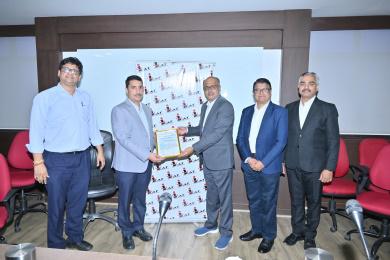“We are happy to announce the introduction of innovative CPCB IV+ Baudouin diesel engines that can provide a flexible and versatile solution for backup power generation and improve cost-effectiveness.”
 Mr. Gurunath Kulkarni, VP, India Operations
Mr. Gurunath Kulkarni, VP, India Operations
In today’s rapidly evolving world, the demand for environmentally friendly products has increased due to growing environmental concerns. Baudouin Diesel engines, developed in strict accordance with CPCB IV+ emission norms and CPCB guidelines, mark a significant milestone in pursuing cleaner and more sustainable energy generation.
Among the most extensive and strict regulations for engines used in backup, power requirements are met by CPCB IV+. These improvements, according to the CPCB standards, are intended to reduce harmful oxides of nitrogen (NOx) and particulate matter (PM) concentrations by approximately 90% compared to the previous CPCB II regulations. Furthermore, a single standard covering all fuel types for engines with a power output of up to 800 kW has been established under the most recent CPCB IV+ emission regulations for prime and standby generators.
Baudouin Diesel engines (from 100 kVA to 750 kVA) are developed by closely exploring the key features, environmental benefits, and prospects mentioned in CPCB IV+ norms. These engines meet compliance needs and are Compact, Durable, and sustainable, providing best-in-class total cost of ownership. Furthermore, these diesel engines are designed to contribute to a lower carbon footprint, fuel conservation, and improved uptime.
Engines below 100kVA are in the pipeline and will be introduced shortly, making us the only manufacturers offering a complete range of diesel generators (15kVA to 4000kVA).
The main features of Baudouin Diesel engines — Proven and established High-Pressure Common Rail (HPCR) technology with Full Authority Electronic Platform and Compact design — are aimed to deliver flexibility, power, and productivity to our customers and are backed by outstanding aftermarket support to guarantee optimal uptime.
Last but not least, the Baudouin platform in CPCB II was electronic; hence, the transition cost is expected to be better than the competition, and we expect to gain 15-20% market share.
 L-R Mr. Prashant Vijay (ICAT), Mr. Sitaram Kashyap (ICAT), Mr. GM Kulkarni (VP), Mr. K P Girase (CTO), Mr. Ashutosh S (DGM Power Gen) receiving ICAT Certification
L-R Mr. Prashant Vijay (ICAT), Mr. Sitaram Kashyap (ICAT), Mr. GM Kulkarni (VP), Mr. K P Girase (CTO), Mr. Ashutosh S (DGM Power Gen) receiving ICAT Certification
We also want to thank CPCB and ICAT for helping us through this transition process.

